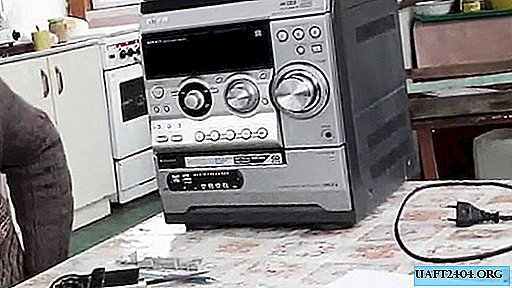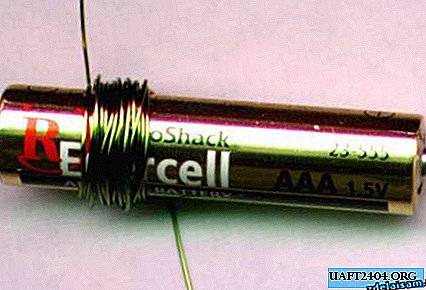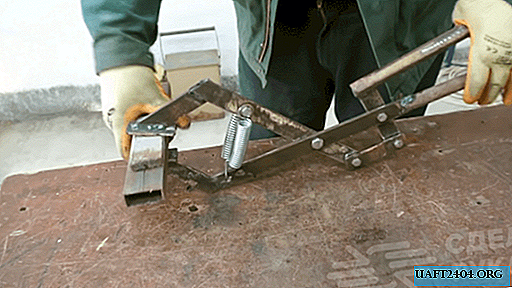Share
Pin
Tweet
Send
Share
Send

I have an old music center, which eventually "moved" to the country, but I really like it. Appearance of the apparatus is so-so, but the sound is simply gorgeous! I especially admire his low-frequency amplifier.
The music center is in good condition, works great. There is a CD - changer for three discs, two decks, one of which records. But, unfortunately, there is no way to read information from modern media - USB drives and flash memory cards MicroSD format.

And in the AliExpress catalog I found a wonderful MP3 player in the form of a built-in socket, on the front side of which there are slots for connecting USB and MicroSD memory cards. In addition, the player controls are displayed on the panel and there is a small display. The device also contains an FM tuner. It is powered by 5 Volts (although there are models with 12 V power supply). There are exactly the same models with the Bluetooth module.
After evaluating the size and appearance of the device, I decided to integrate the player into my music center. I will tell you today how I did this and what came of it.
Necessary tools
For work, we need:
- Built-in MP3 player 5V;
- screwdriver;
- soldering iron with solder and flux;
- mounting wires;
- a tool for creating slots in a plastic case (vibro cutter);
- multimeter;
- screwdriver, 2 screws and a 2mm drill.
Music Center Upgrade Sequence
For the player to work, you must connect:
- power circuit (to the voltage source +5 Volts);
- output signal circuit (left and right channel).
Since there is AUX mode in the center, and on the rear panel there are corresponding connectors in the form of tulips, I decided to connect the output signal chains of the player to the AUX connectors from the inside.

So, to search for points of connection of +5 Volt power circuits and access to the inside of the AUX connectors, remove the side cover of the case.
On the common board of the music center we find three points with the inscription AUX: GND - common, R - right, L - left. We will solder the conclusions of our player GND, RO and OL, respectively, common, right, left.

On the cable going from the power supply unit of the music center to the common board, we are looking for a voltage source of +5 volts. Since the points on the board are not signed, we find the required voltage by measuring with a multimeter. To do this, connect one of its probes to the GND pin or to the chassis of the music center, which is connected to the ground (GND), with a second probe, check all the wires of the loop. Yes, it is very important to search when the AUX mode is on, since it is in this mode that I intend to listen to the player in the future.

After finding the connection points, I solder all five wires of the player according to the time diagram (the sixth ANT pin - I do not use the antenna, since the center has its own FM tuner). When performing soldering, the music center must be disconnected from the network. I place the player on the top panel of the music center and plug it into the network without installing the side cover back.

I turn on the AUX mode and by inserting a MicroSD card with music recordings into the player’s slot, I’m convinced of the player’s performance.

All. Now you can proceed to the final installation. I chose the location of the player on the outer cover of the cassette deck, which is of sufficient thickness. Having marked the future hole, I carefully cut through the plastic.

When installing the player, only its front panel should be outside. The player is mounted with two self-tapping screws twisted into the prepared holes.

Temporarily soldered wires are soldered from the board, the entire loop formed is neatly bundled, laid and fixed inside the body of the music center, after which the wires are soldered completely.

Now for sure. You can close the lid and turn on the music center. At the same time, all cassette decks retained their functionality and work perfectly.
Conclusion
I want to remind you that you can start work of this kind, having a clear idea of the danger of electric shock. It should be remembered that the voltage of a household electrical network of 220 Volts is fatal. The inclusion in the network of electrical appliances with the covers removed is strictly prohibited during operation.
Therefore, when making manipulations with the power plug turned on without a cover, you need to exercise increased caution and accuracy without touching the board with your hands. When working with a multimeter, you should not allow the possibility of shorting the adjacent contact pads on the board with a probe, which can lead to damage to the circuit of the music center.
As for the 5 V power supply, if for some reason you could not find it, and there is a voltage of 9 - 15 Volts, then you can use another modification of the built-in MP3 player with 12 V power, it just works in this range.
Share
Pin
Tweet
Send
Share
Send











